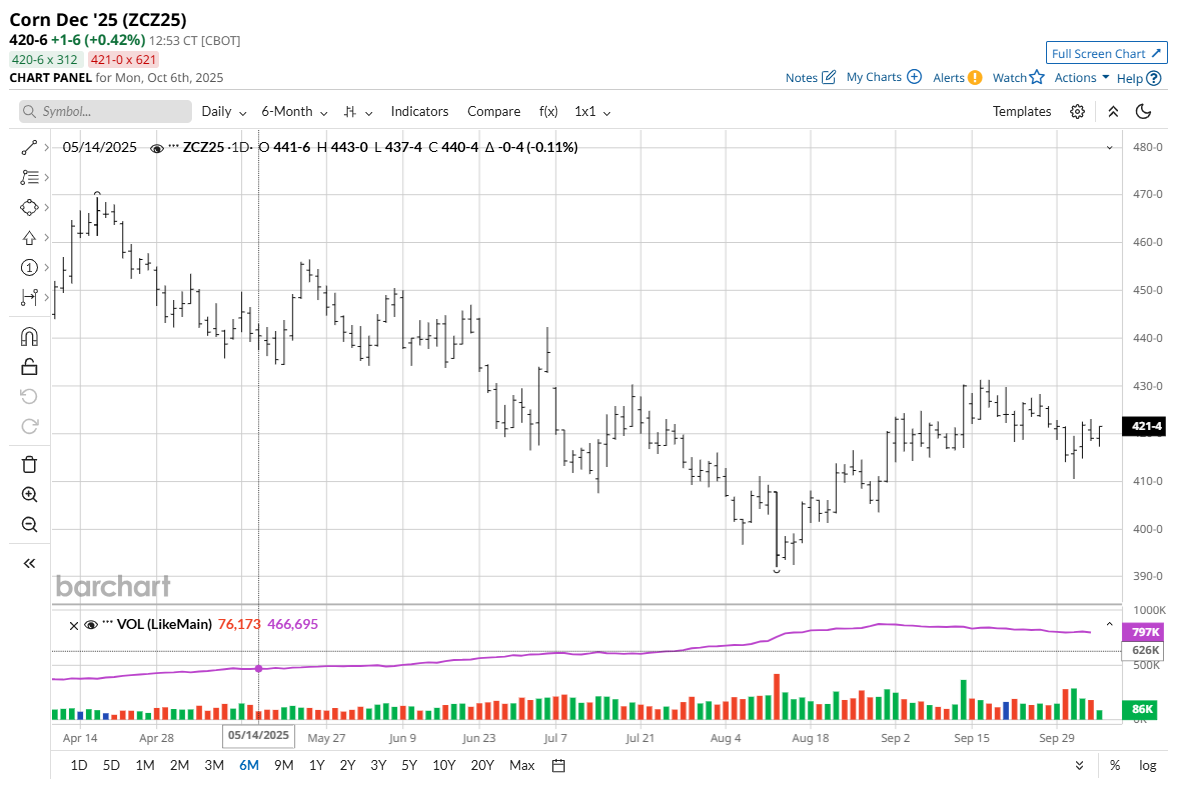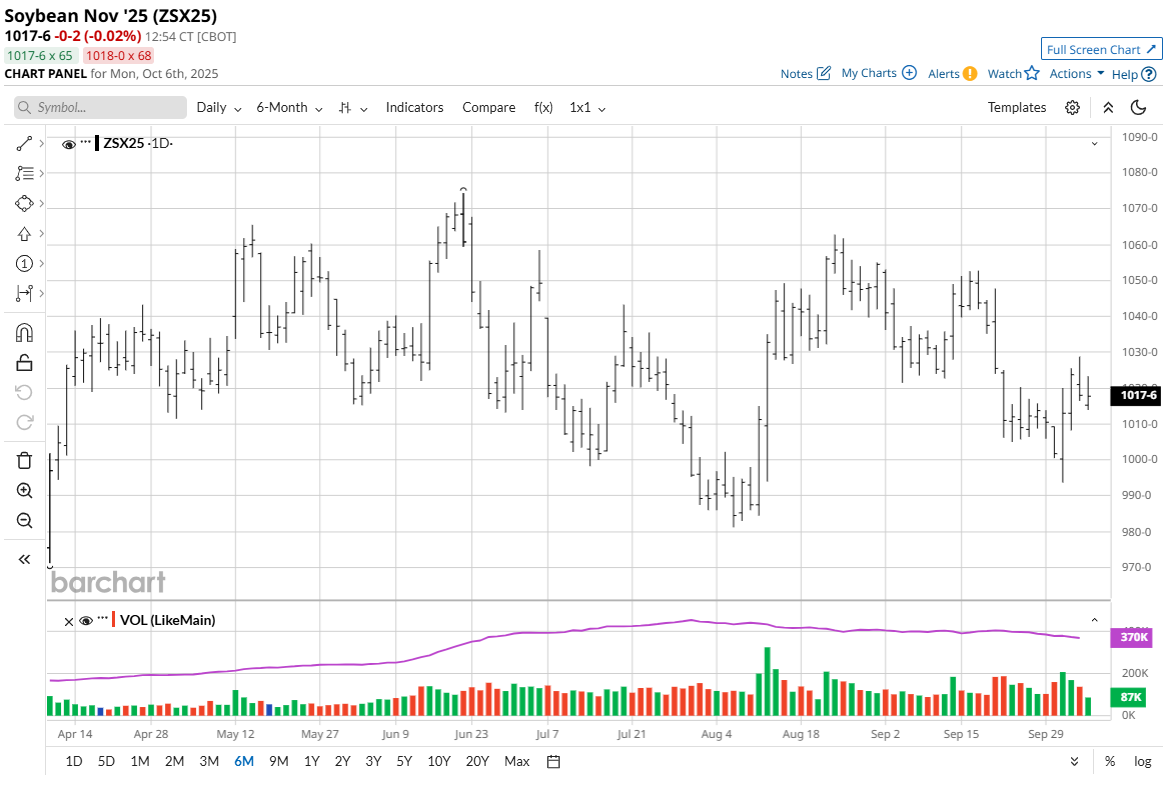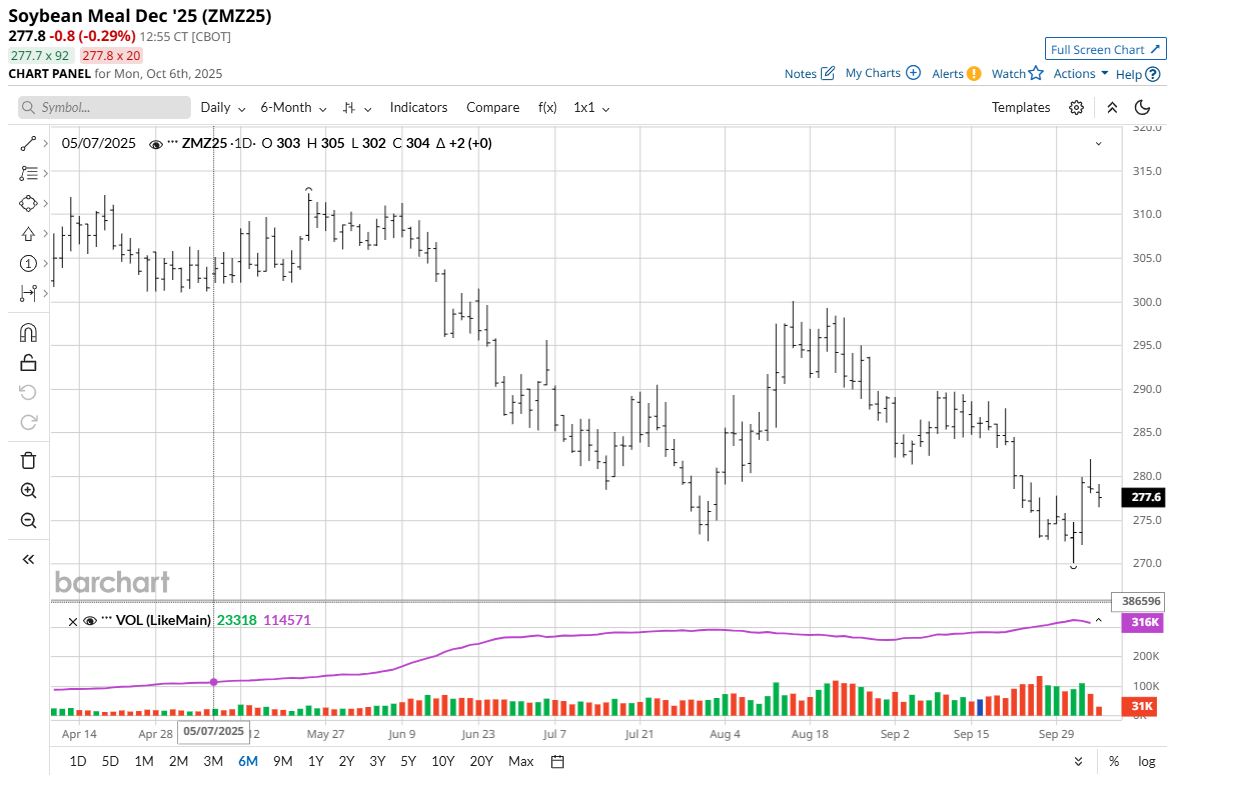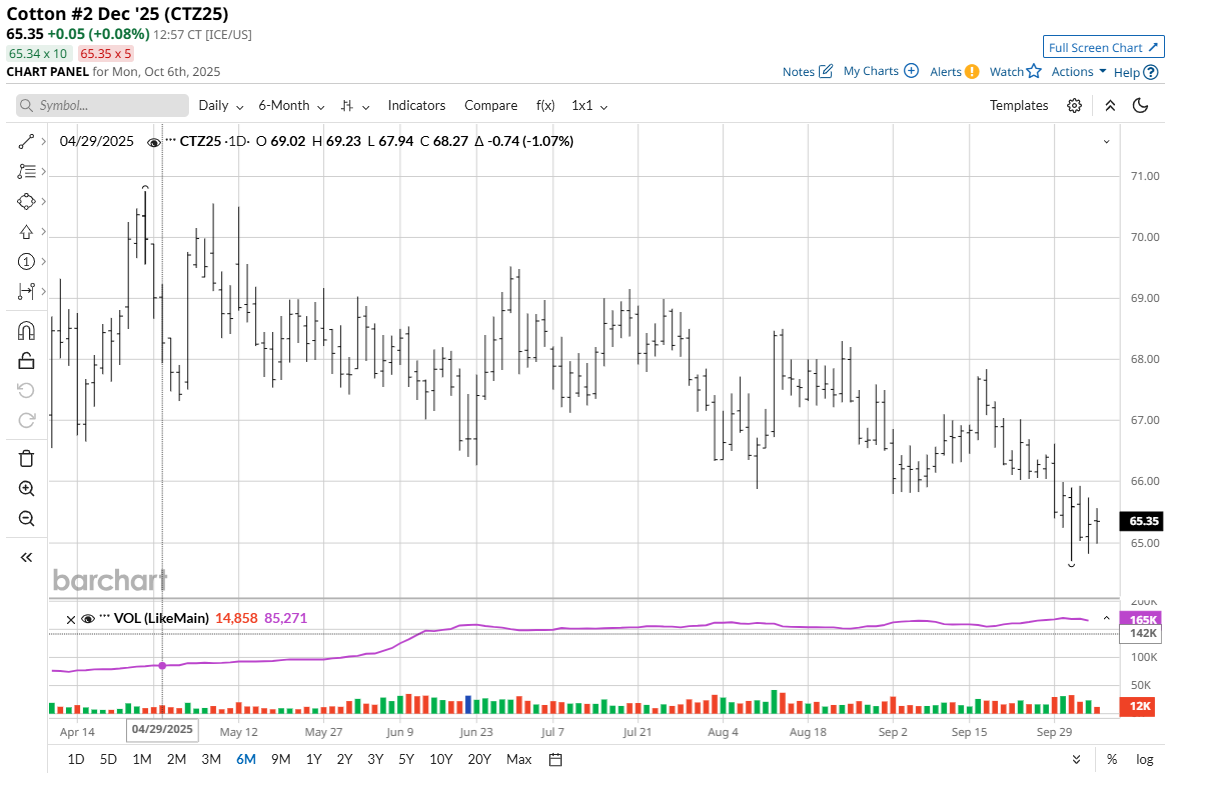
Corn (ZCZ25) and soybean (ZSX25) bulls were left for dead early last week but then posted good price recoveries in the latter half of the week. This has kept alive hopes that near-term market bottoms are in place. Last Wednesday’s upbeat post on U.S. soybeans by President Donald Trump seemed to light a fire under not only soybean bulls, but corn bulls, too. Trump and Chinese leader Xi Jinping meet in about three weeks. A positive outcome would likely give a big psychological boost to grain market traders. China is the world’s largest soybean importer.
Combines are rolling in corn and soybean fields across the U.S. Midwest amid rapid harvest progress. That’s keeping commercial hedgers active sellers in the corn and bean futures markets. Such will likely limit any price rallies in corn and soybeans to only modest ones. Weather forecasters are saying U.S. harvest weather will continue to be mostly favorable for the next two weeks, which will keep the harvest pressure strong and the commercials active sellers.


Corn futures prices have seen some support due to reports of disappointing yields due to worse-than-expected southern rust and the recent hot, dry conditions. Recent export demand for U.S. corn has been good, which is likely to keep a floor under corn futures prices in the coming months. New U.S. trade deals in the coming months would likely produce even more global demand for U.S. corn.
The soybean meal futures market needed to perform much better before the soybean market could mount an upside price offensive. Prices gains in meal (ZMZ25) futures late last week suggest meal bulls may be making their move. In the meantime, soybean planting in Brazil is advancing. Weather and soybean growing conditions in South America will become an increasing trader focus as the calendar year winds down.

The U.S. government shutdown has forced crop data collection and surveys for the October USDA supply and demand report (WASDE) to cease, along with USDA weekly export sales data and weekly crop progress reports. This enhances market and trader uncertainties. That’s not bullish for the grain markets.
Winter Wheat Futures Prices Likely to Take the Lead from Corn, Soybeans
The winter wheat (ZWZ25) (KEZ25) futures markets showed some stabilization late last week, after setting contract lows last Wednesday. Technical price charts remain overall bearish for wheat prices, which will keep the chart-based speculators looking to play the short sides of winter wheat futures in the near term. Wheat futures traders will be looking to the corn and soybean markets for near-term price direction. The late-week rallies in corn and beans have given the wheat market bulls some hope that market bottoms in wheat may be in place, or close at hand.
Cotton Market Continues to Struggle
December cotton (CTZ25) futures prices last week fell 110 points (1.1 cents per pound) on the week and hit a six-month low last Wednesday. Friday saw some short covering, but a price downtrend remains in place on the daily bar chart for December futures, to suggest the speculative bears will continue to press the short side this week.
The lack of USDA data or U.S. economic data due to the U.S. government shutdown may keep the cotton futures market constrained until the government reopens. The government closure and uncertainty of the matter also favors the cotton futures market bears.
Positive elements for the cotton futures market are a very resilient U.S. stock market, as U.S. stock indexes last week hit record highs. Lower U.S. and global interest rates in the coming months are also price-bullish for cotton, due to lower borrowing costs likely stimulating better consumer demand.

U.S. trade with its major global counterparts will remain near the front burner of the cotton market. Improving U.S.-China trade relations in the coming months would be welcomed by cotton market bulls. Trump and Chinese leader Xi Jinping are scheduled to meet in late October and cotton traders will be watching that summit meeting very closely. China is a major cotton importer.
Tell me what you think. I really enjoy getting emails from my valued Barchart readers all over the world. Email me at jim@jimwyckoff.com.







